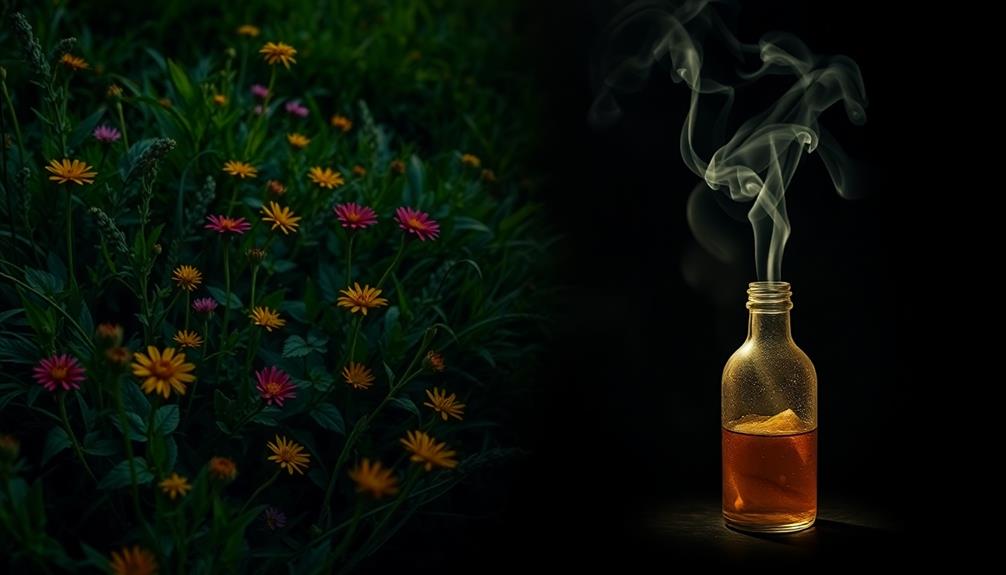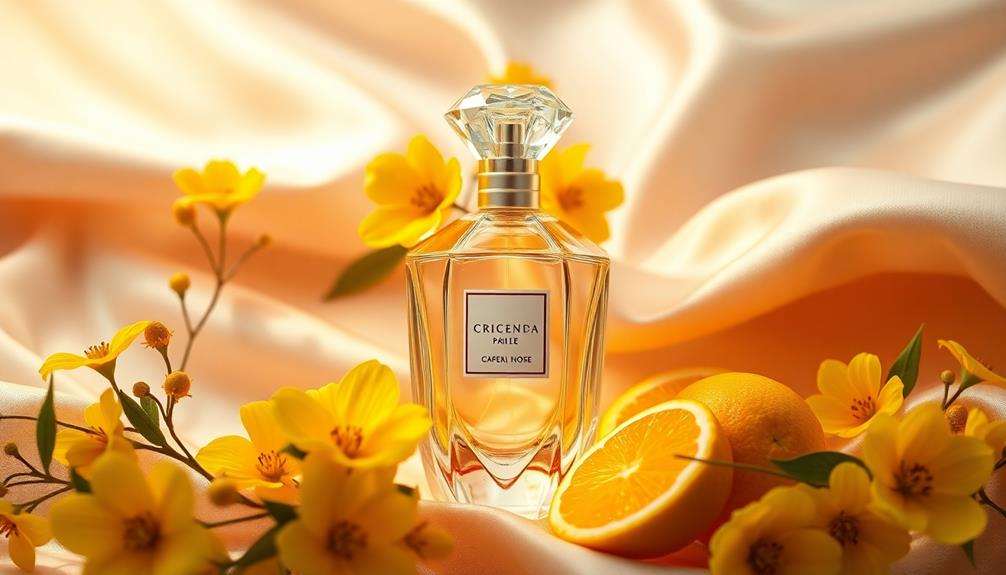Sol de Janeiro 59 smells like a joyful beach vacation! You'll first notice the sweet and fruity scents of velvet plum and sugared violet, which remind you of blooming flowers in a sunny garden. Then, the warm cozy hug of vanilla orchid and whipped amber wraps around you, bringing happiness. It's like a gentle wave of comfort that feels just right for any day! The scent even settles with soft sandalwood and fresh vetiver, creating a calming vibe. This cheerful fragrance is perfect for sunny outings and special moments, so stick around to discover even more about it! As the fragrance lingers, you’ll find it perfectly balanced between the bright sweetness and the smooth warmth that feels like a lingering memory of a summer afternoon. If you’re curious about what Sol de Janeiro 62 smells like, imagine the irresistible scent of pistachio and salted caramel swirling together for a more gourmand experience. Both scents offer a cheerful vibe, but each brings its own unique take on embodying warm, sun-filled days.
Key Takeaways
- Cheirosa 59 has a sweet, fruity opening with notes of velvet plum and sugared violet, reminiscent of a blooming garden.
- The heart features a warm blend of creamy vanilla orchid and whipped amber, creating a cozy atmosphere.
- Base notes of sheer sandalwood and fresh vetiver provide a calming finish, enhancing relaxation.
- The fragrance captures the essence of beach vacations, evoking joyful memories and sunny vibes.
- It's a light, soft scent suitable for everyday wear, lasting approximately six hours.
Introduction

When you think about the essence of a beach vacation, Sol de Janeiro's Cheirosa 59 captures that feeling perfectly. Imagine a warm sunny day, the sound of waves crashing, and the sweet scent of flowers in the air. That's what this fragrance brings!
With a delightful mix of notes, including the lovely vanilla orchid, it creates a cozy and inviting atmosphere. You'll notice hints of velvet plum and sugared violet that make you feel like you're enjoying a tropical treat.
The fragrance feels light and soft, making it just right for everyday wear, whether you're at school, hanging out with friends, or even in the office.
Cheirosa 59 reminds you of the smooth bossa nova music from 1959, adding a touch of nostalgia to your day. The mid notes of whipped amber and sheer sandalwood blend beautifully with the base notes of fresh vetiver, creating a warm hug of scent.
It's like a little piece of paradise you can carry with you! So, let Sol de Janeiro Cheirosa 59 be your go-to fragrance that makes every moment feel like a beach vacation.
Description of the Smell

With a delightful burst of sweetness, Sol de Janeiro's Cheirosa 59 envelops you in its enchanting scent. Imagine the juicy aroma of velvet plum, mingling with the sugary notes of violet.
It's like walking through a magical garden filled with blooming flowers and delightful treats. As you take a deeper breath, the warm embrace of vanilla orchid and whipped amber wraps around you, making you feel cozy and happy.
You can almost picture yourself on a sunny beach, soaking up the sun while enjoying a delicious treat. The scent reminds you of a fun vacation, where laughter and joy fill the air.
Finally, as the fragrance settles, you notice the gentle touch of sheer sandalwood and fresh vetiver, grounding the scent and leaving you with a feeling of calm.
Cheirosa 59 truly captures the essence of being deliciously delightful, just like its name suggests. It's a fragrance that brings a smile to your face and makes you want to share it with everyone you meet.
Source and Composition

Sol de Janeiro's Cheirosa 59 boasts a carefully crafted composition that brings together a harmonious blend of notes.
When you first experience it, you'll notice the sweet and fruity opening of velvet plum and sugared violet. These top notes make you feel cheerful, like a sunny day at the beach!
As you dive deeper into the scent, the heart reveals creamy vanilla orchid and whipped amber. This combination feels cozy, wrapping you in a comforting hug. It's like enjoying a warm dessert on a breezy evening!
Finally, the base notes of sheer sandalwood and fresh vetiver ground the fragrance. These elements add warmth, making the scent feel rich and inviting. It's like walking on soft sand, feeling relaxed and happy.
This beautiful blend of sweet and musky notes is designed to boost your mood, capturing the essence of warmth and relaxation.
Sol de Janeiro's Cheirosa 59 isn't just a fragrance; it's a delightful escape to a nostalgic beach vacation. So, every time you wear it, you'll feel like you're enjoying a sunny getaway, even if you're just at home!
Typical Scenarios or Environments

The vibrant essence of Sol de Janeiro's Cheirosa 59 makes it perfect for a variety of scenarios. Imagine wearing this delightful Perfume Mist on a sunny day at the beach, where the sweet and powdery floral scent transports you to a tropical paradise.
It's also an excellent choice for casual outings with friends, where you'll receive compliments that brighten your day.
If you're heading to the office, don't worry! Cheirosa 59 has a light and inoffensive nature, making it suitable for work environments. You can enjoy a comforting aroma without overwhelming your colleagues.
This versatile perfume can be worn year-round, bringing a fresh feeling in summer and a cozy vibe in winter. The scent feels like a warm hug, no matter the season!
For special occasions, consider layering it with the Delícia Drench Body Butter. This combination amplifies the fragrance, creating a richer scent experience that's sure to impress.
With Sol de Janeiro's Cheirosa 59, you can feel fabulous and confident, no matter where your day takes you!
Emotional or Cultural Associations

Wearing Cheirosa 59 can evoke strong emotional connections, transporting you to cherished memories of sun-soaked days and joyful moments. Imagine walking along the beach, feeling the warm sand beneath your feet while the gentle breeze carries the sweet scent of sugared violet. This fragrance captures the essence of Brazilian culture, where every day is a celebration of life and happiness.
Cheirosa 59 is more than just a scent; it's like a delicious treat for your senses! With its blend of vanilla orchid and that delightful sugared violet, it makes you feel cozy and uplifted. Studies show that 92% of people felt happier after experiencing its fragrance. It's no wonder why so many love this scent!
When you wear Cheirosa 59, you're not just wearing a fragrance; you're embracing a feeling of nostalgia and warmth. It reminds you of gatherings with friends, laughter, and those lovely summer nights.
You can almost taste the sweetness of life in every spritz! So, let Cheirosa 59 wrap you in its joyful embrace, and take you on a fragrant journey that feels like home.
Health or Safety Considerations

When considering Cheirosa 59, it's essential to be aware of its health and safety aspects. This lovely perfume mist is cruelty-free, gluten-free, vegan-friendly, and paraben-free, making it a safe choice for many people. You can feel good about using it!
However, it's important to remember that the main ingredients include Alcohol Denat., Aqua, and Parfum. Some people might be sensitive to ingredients like Alpha-Isomethyl Ionone and Hydroxycitronellal, so keep an eye out for any reactions.
Always use the product as intended—it's designed for external use only and shouldn't be ingested.
The brand cares about the planet too! The recyclable packaging means you can help the environment while enjoying your fragrance.
Plus, if you want to get crafty, you can repurpose those empty bottles. Just make sure to pour the refill over a sink to avoid spills and protect your surfaces.
Final Thoughts

In exploring Sol de Janeiro's Cheirosa 59, you'll find a fragrance that beautifully captures the joy of summer days.
This lovely perfume mist has a sweet and powdery floral scent, featuring notes of velvet plum, sugared violet, and vanilla orchid. When you wear it, you might feel like you're on a sunny beach vacation, making your day brighter and more cheerful.
Cheirosa 59 lasts for about six hours, which is perfect for everyday wear. It has low to moderate projection, so it's great for those who prefer a more subtle scent.
You'll likely receive plenty of compliments when you wear it, especially if you layer it with the Delícia Drench Body Butter. This combo creates an even richer scent experience.
Frequently Asked Questions
What Does Rio De Janeiro 59 Smell Like?
When you think of Rio de Janeiro 59, imagine sweet, powdery florals mixed with warm vanilla and hints of sandalwood. It transports you to sun-soaked beaches, evoking nostalgia and joy with every breath.
Which Sol De Janeiro Scent Is Most Popular?
If you're wondering which Sol de Janeiro scent's the most popular, you'll find Bum Bum Cream stands out. Its unique blend of pistachio and salted caramel notes has created a devoted following among fans.
How Does 59 Smell?
When you think about how 59 smells, imagine a sweet and powdery floral aroma that captures warmth. You'll sense velvety plum and sugared violet, blended with comforting vanilla and earthy sandalwood, evoking nostalgic beach vibes.
When Did Sol De Janeiro 59 Come Out?
Sol de Janeiro 59's set to launch on February 1, 2024. You'll want to keep an eye out for it, as the fragrance promises to capture the essence of a nostalgic beach vacation experience.









